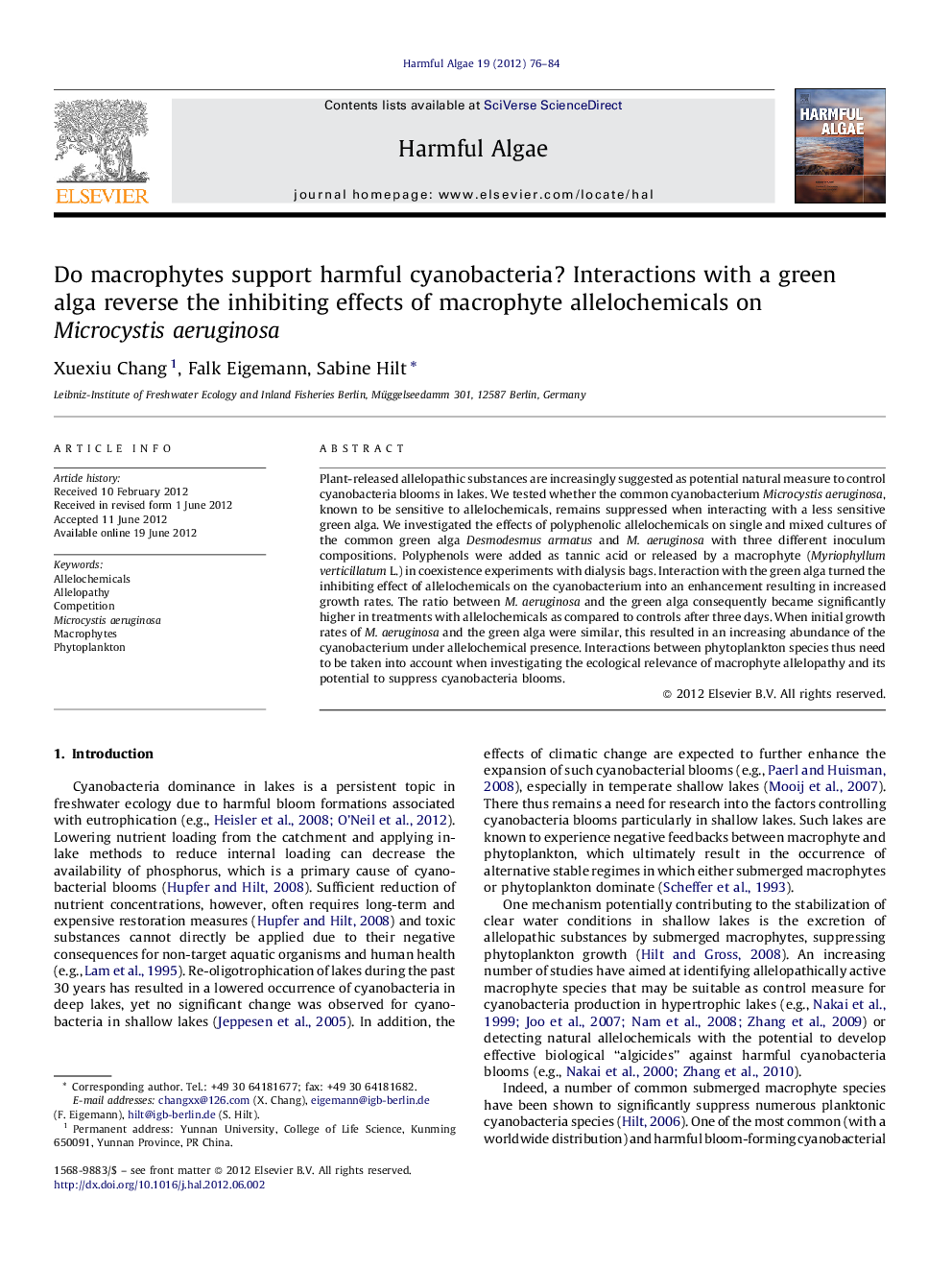| Article ID | Journal | Published Year | Pages | File Type |
|---|---|---|---|---|
| 4545517 | Harmful Algae | 2012 | 9 Pages |
Plant-released allelopathic substances are increasingly suggested as potential natural measure to control cyanobacteria blooms in lakes. We tested whether the common cyanobacterium Microcystis aeruginosa, known to be sensitive to allelochemicals, remains suppressed when interacting with a less sensitive green alga. We investigated the effects of polyphenolic allelochemicals on single and mixed cultures of the common green alga Desmodesmus armatus and M. aeruginosa with three different inoculum compositions. Polyphenols were added as tannic acid or released by a macrophyte (Myriophyllum verticillatum L.) in coexistence experiments with dialysis bags. Interaction with the green alga turned the inhibiting effect of allelochemicals on the cyanobacterium into an enhancement resulting in increased growth rates. The ratio between M. aeruginosa and the green alga consequently became significantly higher in treatments with allelochemicals as compared to controls after three days. When initial growth rates of M. aeruginosa and the green alga were similar, this resulted in an increasing abundance of the cyanobacterium under allelochemical presence. Interactions between phytoplankton species thus need to be taken into account when investigating the ecological relevance of macrophyte allelopathy and its potential to suppress cyanobacteria blooms.
► Myriophyllum verticillatum suppresses Microcystis aeruginosa growth in pure cultures. ► Green alga Desmodesmus armatus suppresses M. aeruginosa growth. ► Joint influence of macrophyte and green alga enhances M. aeruginosa growth. ► Interaction thus changes effects of macrophyte allelochemicals on phytoplankton.
